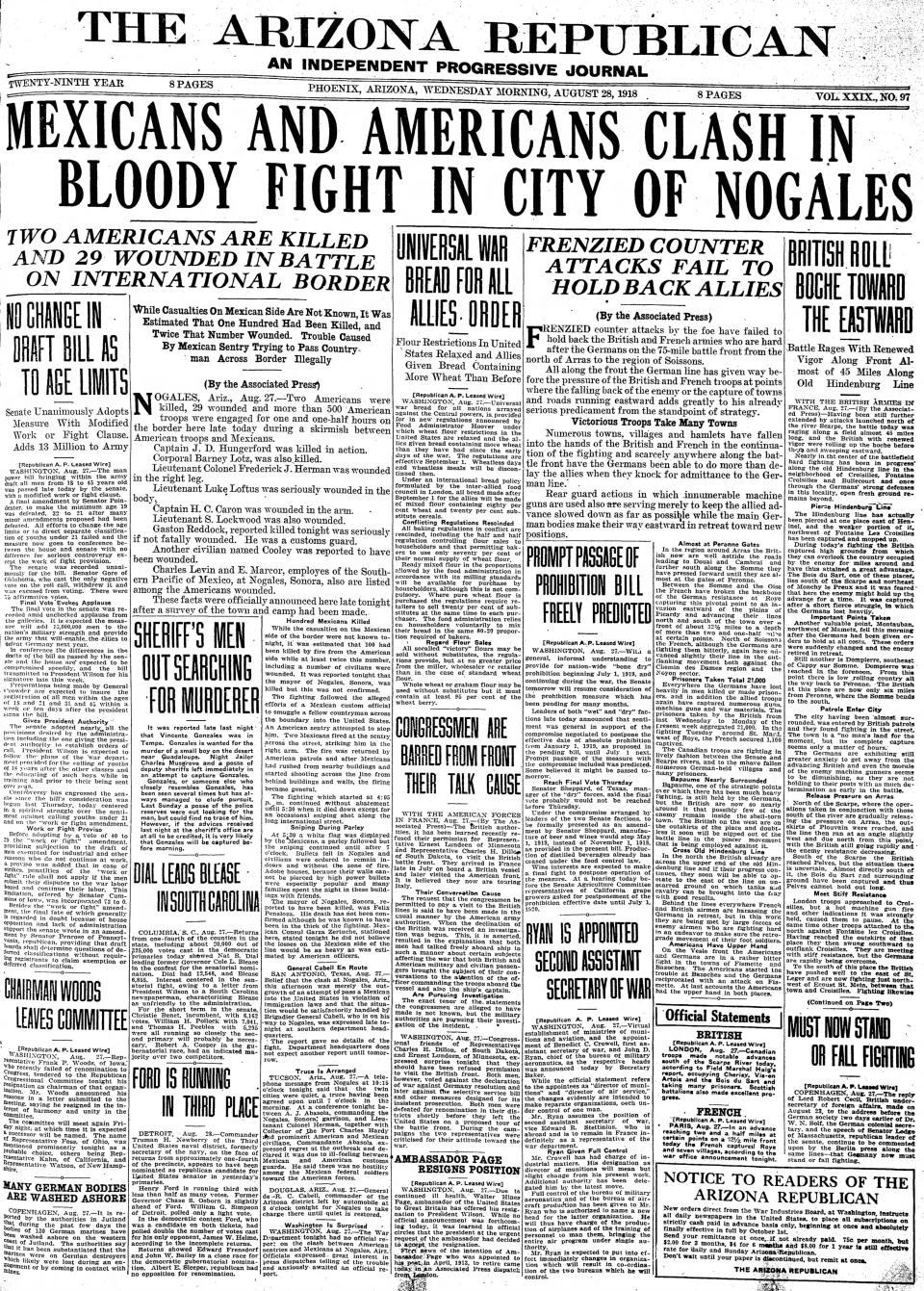This Nogales battle spurred construction of the first Southwestern border fence
The U.S.-Mexico sister cities of Nogales spent much of their early history in harmony, their only division a street labeled "International Ave" and infrequent obelisks erected in the 19th century.
Then, on Aug. 27, 1918, shots were fired over the border after a man seemingly tried to cross into Mexico with unauthorized goods and a dispute broke out between customs officials.
"Mexicans and Americans clash in bloody fight in the city of Nogales," The Arizona Republican, as The Arizona Republic was then known, headlined the Aug. 28, 1918, front page. The incident — called the Battle of Ambos Nogales, which means "both Nogales" — sparked the first permanent U.S.-Mexico border fence.
"While the casualties on the Mexican side of the border were not known tonight, it was estimated that 100 had been killed by fire from the American side, while at least twice this number, including a number of civilians were wounded," the Associated Press reported Aug. 28 in The Republican.

A day after the battle, the Associated Press reported lower death estimates, stating that the Mayor of Mexico's Nogales, Félix Peñaloza, and 13 others on the Mexican side, including four women, were killed. In the end, there were as many as 129 Mexicans killed, four American deaths and a total of 330 people wounded, according to Carlos Parra's research published in Nogales International.
Parra, a postdoctoral fellow at the University of Arizona, said many factors were at play when simmering tensions in Nogales reached a tipping point. Residents of Ambos Nogales used to openly travel back and forth between the U.S. and Mexico to trade or get groceries, Parra said, which got harder once World War I led to rationing restrictions that non-English speakers were not always informed about.
"You have the ongoing violence of the Mexican Revolution that's been going on for eight years by the time the Battle of Ambos Nogales happens," Parra said. "You have the tensions of World War I — that xenophobia — and you have this rationing sort of crisis."
In the Aug. 29, 1918, paper, The Republican featured the story of an American businessman who took refuge in Sonora during the battle. He said residents of Nogales felt more "regret rather than animosity over the shooting," according to an Associated Press report.
"The opinion, insofar as it is expressed by the people of Nogales, Sonora, with whom I conversed, was that the shooting was an unfortunate affair started by irresponsible persons under undue stress of excitement," the man told a reporter on Aug. 28, 1918.
The battle lasted less than 24 hours, and most of the shooting happened the evening the battle started, the Associated Press wrote. The first permanent Southwestern border fence was built by the U.S. Army shortly after the battle to prevent miscommunication and violent altercations at the border, Parra said.
"It's just a two-mile long fence between neighbors and that's it," Parra said of 1918's border fence in comparison to today's U.S.-Mexico border wall. "It's a reminder of how we take for granted the current crisis that we have today, and we lose sight of the fact that we haven't always had these issues."
Reach the reporter at alexis.waiss@gannett.com.
This article originally appeared on Arizona Republic: How the Battle of Ambos Nogales led to Arizona's first border fence

